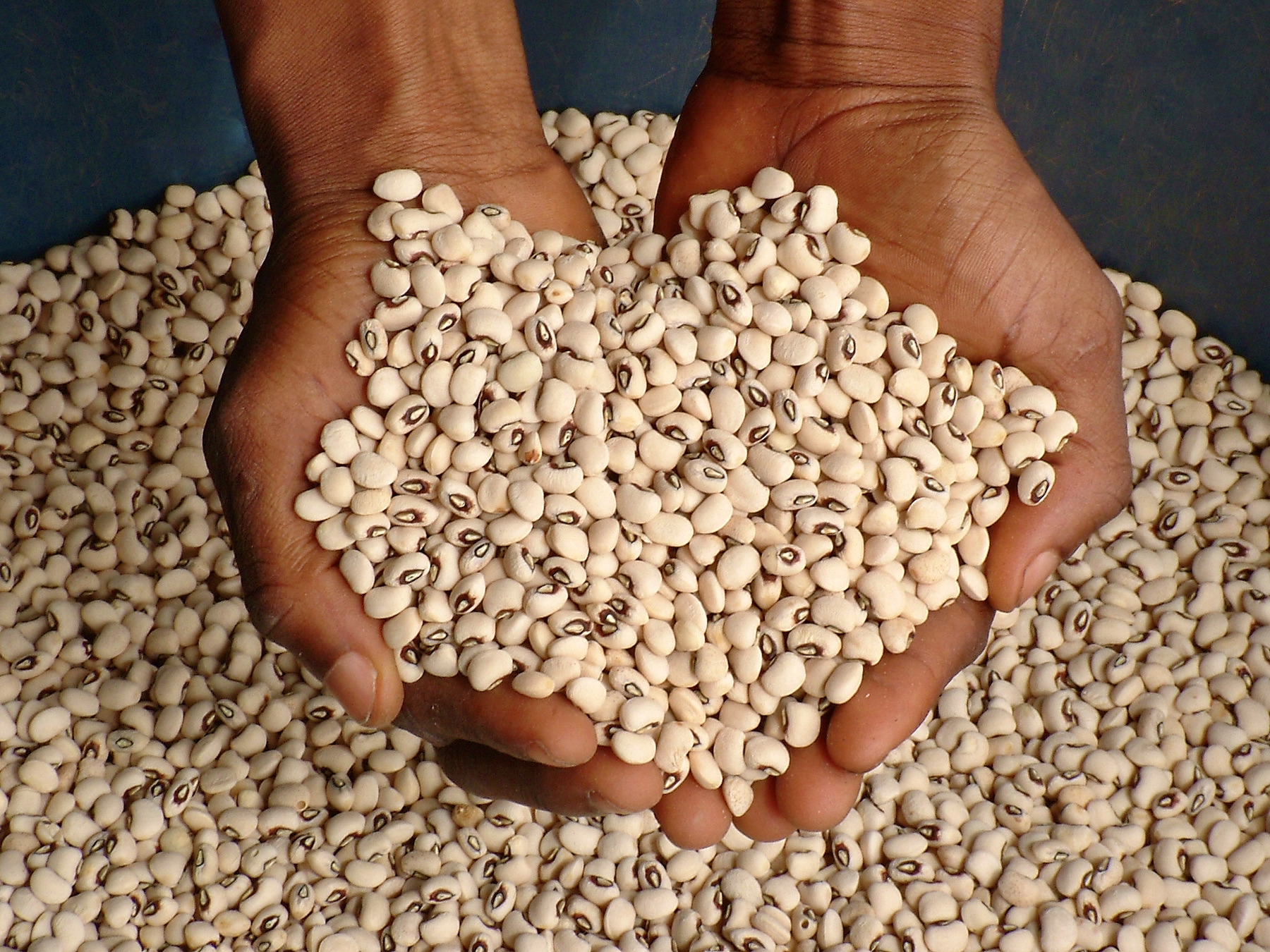Global Strategy for the Conservation and Use of Vigna
Global Strategy for the Conservation and Use of Vigna was published in 2023 (Global Crop Diversity Trust 2023, DOI: 10.5281/zenodo.7565174). This document, developed with the input of a large number of experts, aims to provide a framework for the efficient conservation and effective use of globally important collections of Vigna genetic resources. This webpage provides a summary of some of the its key findings and of the recommendations for priority actions.
Size of collections and their locations
Data from WIEWS, Genesys, GRIN-Global databases, and a survey indicated a total of over 129,000 Vigna acessions conserved in genebanks at the global level. The interactive bubble map below shows the combined data retrieved in 2022 from Genesys and WIEWS databases.
The table below shows a total of 96,161 Vigna accessions belonging to 34 taxa including wild relatives and landraces were reported across the 21 genebanks that participated to the survey in 2021/2022.
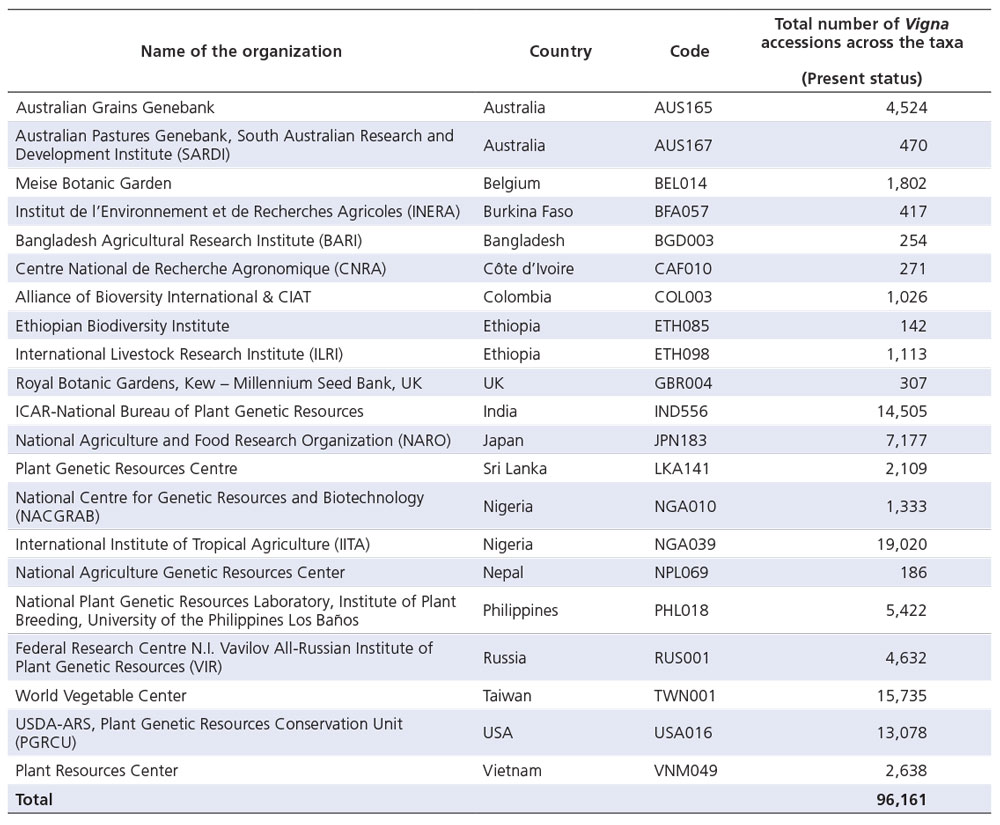
Key collections
The world’s five largest collections of Vigna germplasm:
- International Institute of Tropical Agriculture (IITA)
- WorldVeg
- Indian Council of Agricultural Research (ICAR) -National Bureau of Plant Genetic Resources (NBPGR)
- USDA
- National Agriculture and Food Research Organization, Japan (NARO)
Organizations that maintain key smaller collections include:
- Nepal National Agriculture Genetic Resources Center
- International Center for Tropical Agriculture (CIAT)
- Australian Pastures Genebank
- South Australian Research and Development Institute (SARDI)
- Royal Botanic Gardens, Kew – Millennium Seed Bank, UK
- Meise Botanic Garden, Belgium
The chart below shows the number of accessions for each of the biggets collections (collections indicated FAO INSTCODE).
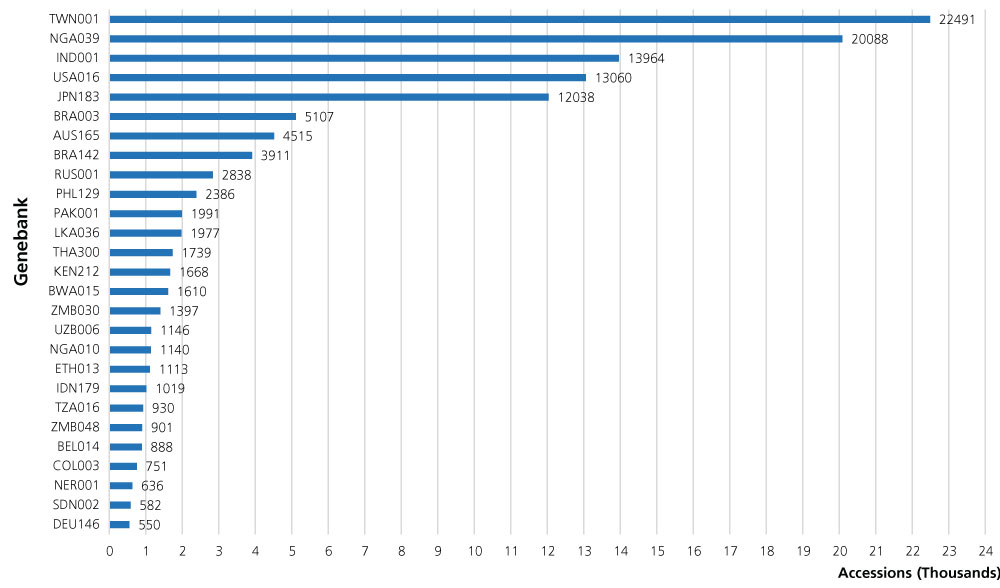
Vigna accessions conserved ex situ by regions where they are stored
The bars show the number of accessions of cultivated and wild Vigna species by regions where they are stored (i.e. the location of the genebanks).
Ex situ holding by biological type
The chart shows the number of Vigna accessions by biological type. For a large proportion of accessions conserved in genebanks the passport data in the open databases do not include information on the biological type of the accessions. The data was retrieved in 2022 from Genesys, WIEWS and GRIN-Global databases.
Information and documentation
The current global system of Vigna conservation and use is constrained by the lack of standardized, updated, and readily accessible information about existing genetic resources conserved ex situ.
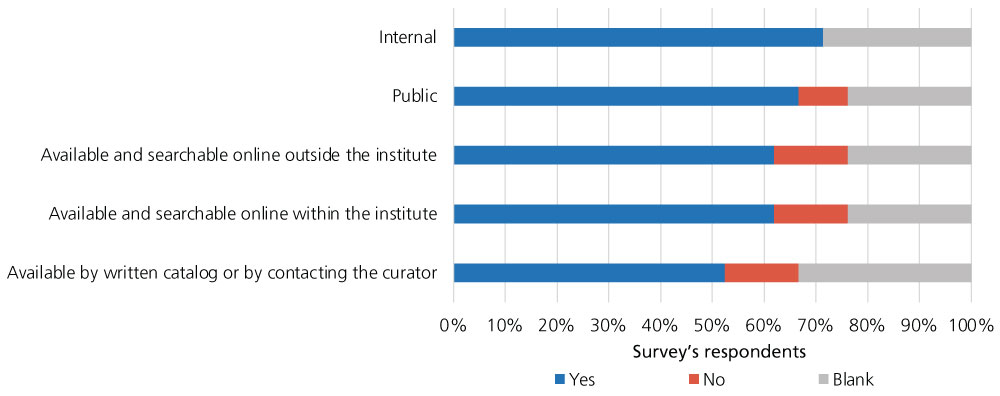
Availability of information about germplasm and the types of platforms used to store information in genebanks storing Vigna materials that answered the 2021-2022 survey (n = 21).
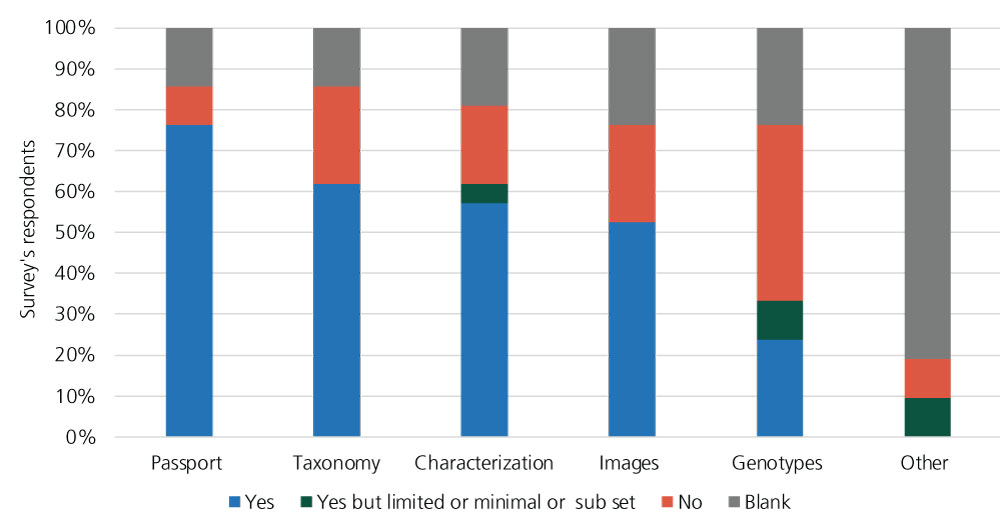
Types of data available for Vigna germplasm accessions stored in genebanks that answered the 2021-2022 survey (n = 21).
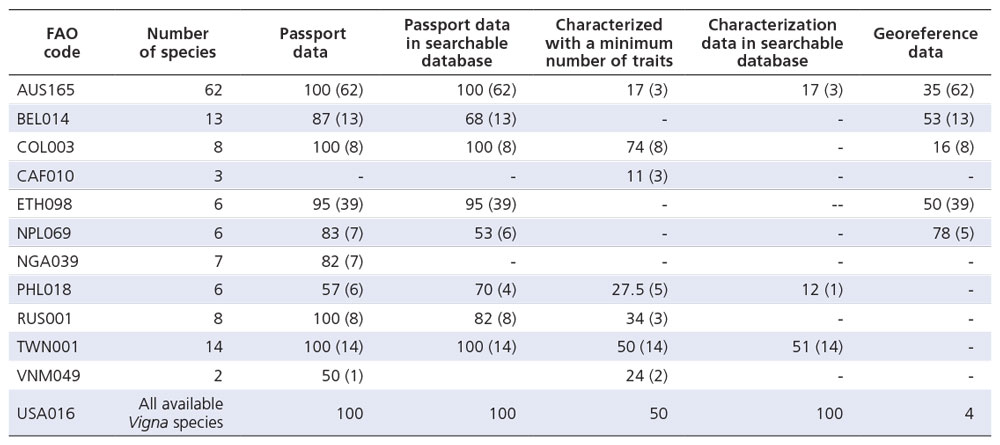
Accession level information (%) for different species in the genus Vigna (2021–2022 Survey). Note: Values in parentheses show the number of species.
Vigna diversity tree
A diversity tree is a stratification of a genepool into groups and subgroups. The concept originated in a paper published by van Treuren et al. (2009) proposing a way to analyze and plan the composition of genebank collections. The diversity tree visualization is interactive (click on the tree to open it).
Recommendations for priority actions
The overall objective of the proposed strategy is to outline a plan for the effective conservation of the diversity of Vigna crops and their wild relatives. This global strategy suggests several key aims for the years to come:
- Further develop and expand the prevailing world-wide collaborations with the aim to conserve a global Vigna collection and make information available across different genebanks with an emphasis on harmonizing and maintaining all collections under one platform.
- Promote regeneration and safety duplication of collections through collaboration with research and breeding institutes.
- Genebanks and other institutes (such as universities and research institutes) should work closely on germplasm characterization, and add these data to global databases to identify collection gaps and reduce duplicate holdings.
- Preserve endangered crop wild relative species, providing support for, and emphasizing the importance of, successful pre-breeding; and encourage the use of crop species belonging to different gene pools that have been neglected in the past.
- Work towards developing a strong common international platform that assists small genebanks by providing technical and financial support for germplasm conservation.
- Strengthen in situ conservation of Vigna genetic resources, particularly Vigna crop wild relatives, and connect this with ex situ conservation activities.
Partners and donor
The development of this crop conservation strategy was funded by the German Federal Ministry of Food and Agriculture (BMEL) as part of the three-year project led by the Crop Trust: Breathing New Life into the Global Crop Conservation Strategies: Providing an Evidence Base for the Global System of Ex Situ Conservation of Crop Diversity. The Crop Trust also cooperated with the Secretariat of The International Treaty on Plant Genetic Resources for Food and Agriculture (ITPGRFA) in the development of this document.




